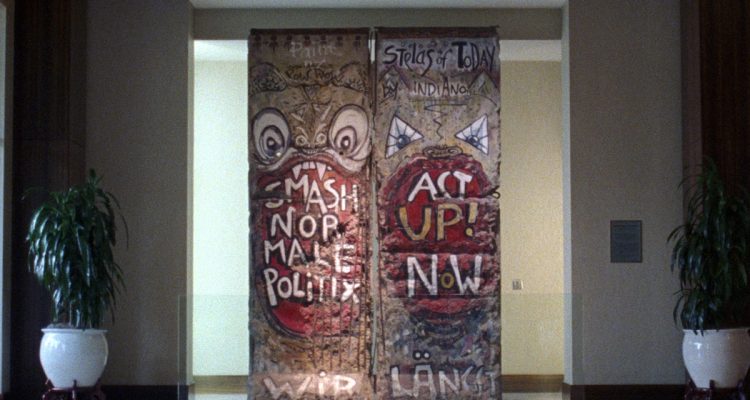“And on the pedestal these words appear:/‘My name is Ozymandias, King of Kings;/Look on my works, ye Mighty and despair!’/Nothing beside remains. Round the decay/Of that colossal wreck, boundless and bare.”
Percy Bysshe Shelley’s iconic poem, “Ozymandias,” since its publication in 1818, has endured as a tribute to the diminishing power of empires and the insubstantiality of nations for centuries—a sustaining reminder that leaders and monuments perceived to be indestructible will fade into dust. Although the remnants of the Berlin Wall have yet to disintegrate, as evidenced by Courtney Stephens and Pacho Velez’s documentary “The American Sector,” the fractions of the dividing monolith, in their own way, symbolize their own rendition of transience, as the pair of filmmakers trace the scattered pieces of the wall across the United States.
Recollecting on the past frequently foretells the trajectory of the future, and “The American Sector,” by incorporating an open-ended, listener’s approach, offers an insightful, authentic dissection of oppression by relating Germany’s historical moment of unity in the late 1980s with the fragility of U.S. political disharmony in the late 2010s and present day. Implementing the testimonies of immigrants, college students, veterans, and art collectors demonstrates the variety of personalities that sew together the multilayered fabric of a nation.
While optimists interpret the scraps of the Berlin Wall to signify the collective efforts of individuals devoted to destroying tyranny, cautionary citizens believe that the fragments characterize the eternal struggle of the wandering refugee constantly in search of safety; others do not care one way or the other. Accordingly, “The American Sector” identifies both a generational disconnect, between those old enough to witness the fall of the Berlin Wall with those born after the event, and a sociopolitical divide, which is embodied by those who believe that the broken wall confirms the ability to overcome global persecution and those who would rather focus on solving domestic issues of injustice. Furthermore, selective memory—in all of its faults—functions as an underlying theme throughout the course of the documentary.
READ MORE: 12 Most Anticipated Films Of The 2020 Berlin International Film Festival
Foremost, Stephens and Velez accumulate a case study of interviewees from every walk of life, eschewing any class or racial bias, and although the filmmakers clearly harbor the hope to tie the past physical divide between Germany with the intangible, albeit inescapable rift between Americans as a result of the contemporary political climate, “The American Sector” simultaneously exists in a self-sustaining, nonpartisan state as an uplifting, pensive catalog of the United States.
Coinciding with its road trip format, the documentary’s narrative is peaceful, unconcerned with dramatic shifts in tempo or compulsory documentarian speechifying. Still, one should not underestimate the revolutionary potency of “The American Sector”; the film speaks to experiences that affect everyone who lives the United States, whether they choose to acknowledge this reality or not, and the ultimate accomplishment that one can hope for “The American Sector” is that people who need to hear its self-assured discourse on the nation’s future will be fortunate enough to experience—and appreciate—the film in any capacity.
Sliding in at a swift 70 minutes, “The American Sector” concludes on a flawless note, capping off the documentary’s airtight structure, a decision that certifies the film’s marketability and safeguards the nonfiction feature’s meditative allure. Stephens and Velez should feel reassured that their three-year venture was not in vain. With “The American Sector,” the two artists crafted a gem—a film that, while tranquil in spirit, assembles a composite sketch of the 21st-century American landscape that shouts with the energy of a thousand voices. [B+]
Click here for our full coverage of the 2020 Berlin International Film Festival.

